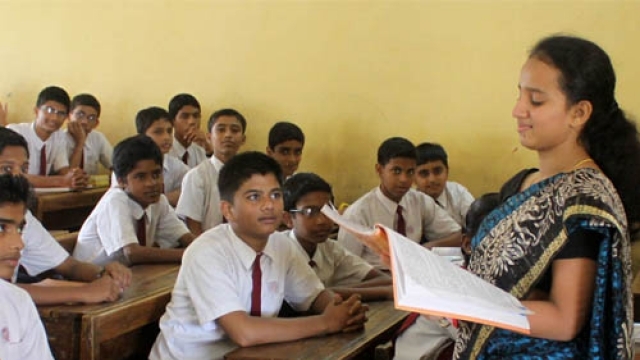India wants to hire 30 lakh primary teachers by 2030

India needs to recruit at least three million primary teachers and over eight million secondary teachers in next 14 years to ensure that every child is in school and learning well, says a UN report. India accounts for ¾ of the entire southern Asia target.
The UNESCO Institute for Statistics (UIS) on World Teachers’ Day (5 October) has released a paper setting out the first-ever estimates of how many more teachers are needed to meet Sustainable Development Goals 4 (SDG 4). The international education community has pledged to achieve universal primary and secondary education by 2030 as part of SDG 4.
However, about 263 million children and youth are out of school, according to recent UIS data. This includes 25 million children of primary school age who will probably never set foot in a classroom, while just 14% of youth complete upper secondary education in low-income countries.
The report says the world has just 14 years to recruit a total of 69 million teachers: 24.4 million primary teachers, and almost twice as many – 44.4 million – secondary school teachers to achieve the education targets set by the United Nations.
While Sub-Sahara region accounts for largest scarcity of the teachers with the need of over 17 million more teachers including primary and secondary both, the Southern Asia comes next which needs to recruit a total of 15 million.
Global progress could depend on, first, whether there even is a teacher, or a classroom in which to teach. Second, on whether that teacher walks into the classroom with the training, resources and support that they need to do their job. And third, they have manageable number of children or 60, 70 or even more pupils.
Over 25 million children of primary-school age will probably never set foot in a classroom. Just 14% of youth complete upper secondary education in low-income countries,” says the report.
We already know that better pay will attract the best graduates into the profession and give them an incentive to stay. A 10 per cent increase in teacher’s pay tends to result in a five to ten per cent increase in pupil performance. Given the stretched finances of developing world governments, the international community has a responsibility to help fund this – which is why it is such a disgrace that international education aid has been in decline since 2010,” says Vikas Pota, CEO of the Varkey Foundation who co-authored a report “Closing the teacher gap, almost 69 million needed”, along with Silvia Montoya, Director of the UNESCO Institute of Statistics.
War in Syria and Iraq has destroyed large parts of the education systems and has had a knock-on effect on neighbouring countries trying to cope with an influx of refugees. Referring to the Syrian Ministry of Education, the report states the number of teachers within Syria almost halved – falling by 46% — between 2012 and 2016.
Sub-Sahara region has the fastest growing school-age population but its teacher gap is by far the largest, as it will need to recruit a total of 17 million primary and secondary teachers by 2030. More than 70% of the region’s countries already face acute shortages of primary school teachers, rising to 90% for secondary education.
Southern Asia has the second-largest teacher gap, which explains the overcrowded classrooms, particularly at secondary level. The average pupil-teacher ratio stands at 34:1 at primary level and 29:1 (2014 estimates) at secondary level – far higher than the global average of 18:1. Southern Asia needs another 15 million teachers by 2030, the vast majority (11 million) at secondary level.
Post Your Comments for this News
Related Articles
-
Tips for Teaching Coding in Classroom
2017-06-16 12:39:35
-
How to Prepare for Student Orientation Day
2017-05-18 12:53:05
-
World Day for Cultural Diversity for Dialogue and Development.
2017-05-18 10:27:42
-
Big Data for Big Impact #WTISD-17
2017-05-17 09:28:16



